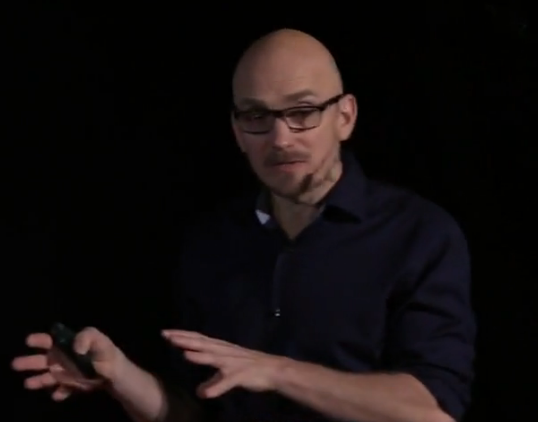OK, so as you probably figured out now, the trick is that I have two cards in each hand,
那么你现在大概能猜到了,骗术就是我每只手里都拿了两张牌,
and when I hand one of them over, the black one kind of disappears into the black surface on the table.
当我把背面那张牌推过去的时候,黑色那张原本被选的牌就在黑色桌面的映衬下消失,被我藏起来了。
So using pictures like this, normally not more than 20 percent of the participants detect these tries.
像这样使用照片,通常有不到20%的参与者会发现这些骗局。
And as you saw in the movie, when in the end we explain what's going on,
正如你在影片中看到的,最后我向他们解释发生了什么的时候,
they're very surprised and often refuse to believe the trick has been made.
他们都非常的惊讶并且通常拒绝相信其中有诈。
So this shows that this effect is quite robust and a genuine effect.
这就表明,这种效应是十分强烈而又真实的。
But if you're interested in self-knowledge, as I am, the more interesting bit is,
但是,如果你和我一样对“自知之明”感兴趣的话,最有趣的部分是:
OK, so what did they say when they explained these choices?
他们会如何解释自己所作出的选择?

So we've done a lot of analysis of the verbal reports in these experiments.
为此,我们做了很多关于这个实验当中口头报告的分析。
And this graph simply shows that if you compare what they say in a manipulated trial with a nonmanipulated trial,
这张图表明,如果你将有骗局的那组的说辞和没有骗局的那组相比较,
that is when they explain a normal choice they've made and one where we manipulated the outcome,
他们对自己正常选择的解释和经过操控后的解释,
we find that they are remarkably similar.
你会发现,是非常相似的。
So they are just as emotional, just as specific, and they are expressed with the same level of certainty.
他们都同样的情绪化,目标明确,并且他们表达的肯定程度也处于同一水平。
So the strong conclusion to draw from this is that
从这个实验中得到的强有力的结论是,
if there are no differences between a real choice and a manipulated choice, perhaps we make things up all the time.
如果在真正的选择和被操控的选择之间没有差异的话,或许我们一直都在编造理由。



